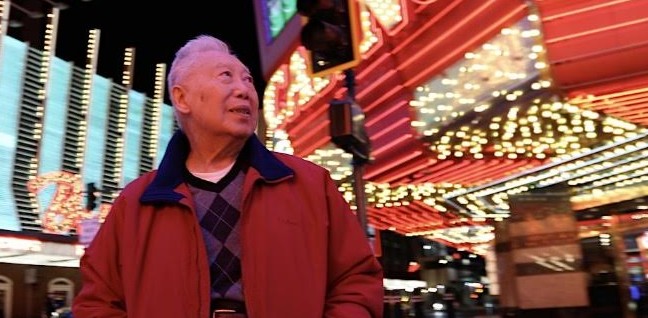By Randall Yip, Executive Editor
The Takeaways
- Lost Hero of Dance: George Lee was a trailblazing Asian American dancer who performed with the New York City Ballet in 1954 and was later featured on Broadway, breaking racial barriers in dance during a time when dancers of color were rarely represented.
- A Life of Perseverance: Born to a Chinese acrobat father and Polish dancer mother in Hong Kong, Lee escaped to the United States after years of poverty and displacement. He pursued ballet despite facing discrimination and eventually turned to Broadway, where Gene Kelly influenced his career.
- Documenting a Legacy: Jennifer Lin and Jon Funabiki’s documentary Ten Times Better highlights Lee’s extraordinary journey of resilience and achievements, restoring his overlooked contributions to dance history.
The Details:
The name George Lee probably doesn’t resonate with most people. The 90 year old died of heart complications Easter weekend.
For the past 40 years, he lived in relative obscurity in Las Vegas working as a blackjack dealer.When film director Jennifer Lin (Beethoven in Beijing) tracked him down, the first thing he said was “Why are you looking for me? I’m nobody.”Lin and longtime educator, first-time filmmaker Jon Funabiki had been doing research for a film on racial stereotyping in the ballet, when they stumbled upon Lee.
“I’m looking at these photographs from 1954 and I see the picture of the dancer doing the Chinese dance for the Nutcracker which is called Tea and I was surprised because it was a young Asian dancer. I didn’t think in 1954 the New York City Ballet had any dancers of color other than Maria Tallchief, (a Native American)” said Lin.
A journalist, she set out to find out more about this young ballerino. Lin discovered his name and found a review that singled out his performance for his athleticism and technique.After six weeks of research, she learned he was living a quiet life amidst the winning sounds of slot machines and the bright lights of Vegas. She finally tracked him down by phone.
“And, so, he told me his story.”It was after hearing his story, that the filmmakers knew they were on to something.”From the moment Jennifer Lin and I met George Lee, we knew he was like a hero whose story was lost in history. He had done so much. He’d achieved so much and yet you know nobody today knew anything about him. He was not included in the histories of ballet and so we just felt like we needed to really jump on this story and make sure that his story was restored to history,” Funabiki said to AsAmNews.
Out of that story came Lin and Funabiki’s film Ten Times Better which will be streamed on American Masters on the PBS app and on PBS.org sometimes soon.
Born in 1935 to a Chinese acrobat father and a Polish dancer and mother in Hong Kong, Lee learned ballet at a very young age. His father died in a truck accident in 1945.
During Lee’s time in Shanghai, at the age of 5 he performed in nightclubs with his mother to help make ends meet. In 1949, his mother took her son away from Shanghai to escape China’s Civil War. After a couple of years in a refugee camp in the Philippines, the two ended up in the United States.
“His mother kept saying, you’re going to America, everybody’s White, so you have to be ’10 times better.’ And he repeated this over and over again. And he said that was the reason why he worked so hard to be so good,” explained Funabiki.
With the help of a friend of her late husband, his mother enrolled him into the prestigious School of American Ballet. Considered the training ground for the New York City Ballet, Lee nailed an audition and producers cast him in the Nutcracker at the age of 18.
She asked him why he never danced for the New York City Ballet again.
“And he said that they told him he was too short. So, was he too short or maybe a little too Asian? I don’t know,” Lin said.
Fortunately for Lee, actor Gene Kelly saw his potential and cast him in the Broadway production of Roger & Hammerstein’s Flower Drum Song. It’s a role Lee initially didn’t really want as his passion was still with the ballet.
“He did a ballet piece for his audition, and he tells the story about leaving the audition, waiting for the elevator and Gene Kelly came up to him and said, George, I know you love ballet, but just give Broadway a chance. Learn something new. Make some money. Gene Kelly was very influential in persuading George to give Broadway jazz a try,” Lin said.
For the next 20 years he danced on Broadway and in touring shows and revues. He retired from dance in 1980 and learned to deal blackjack.
He appeared in Baker Street from producer and director Hal Prince. Lin played a coolie. He also appeared as a coolie in Annie Get Your Gun starring Debbie Reynolds. Again, he played a coolie. Getting good roles proved difficult.
His body finally gave out and he retired from dance and took a job as a blackjack dealer, a position he held for 40 years until his retirement very recently.

“This is an epic tale. It’s an epic tale of accomplishment, but also an epic tale of perseverance. I mean, George and his mother lived in poverty in Shanghai. George was a child performer in nightclubs and that was the way they made money. Sometimes they get paid in rice. George was a remarkable footnote in ballet history,” said Lin.
He turned 90 in February.
He was never married, had no children and was an only child.
“Unfortunately, with his passing is the end of his family.
“George was a nobody because nobody knew about him,” said Funabiki. “Very few people knew about his history and his achievements in dance and so in a way the film Ten Times Better turns a nobody into a somebody, somebody who really is kind of a hero in dance.”
“I think George finally realized that he was a somebody,” said Lin. “And I think he always thought that himself, but now he could see that others saw him as a somebody, as a pioneer.”
AsAmNews is published by the non-profit, Asian American Media Inc.
We’re now on BlueSky. You can now keep up with the latest AAPI news there and on Instagram, TikTok, Facebook, YouTube and X.
We are supported by generous donations from our readers and by such charitable foundations as the Robert Wood Johnson Foundation.
You can make your tax-deductible donations here via credit card, debit card, Apple Pay, Google Pay, PayPal and Venmo. Stock donations and donations via DAFs are also welcomed.


